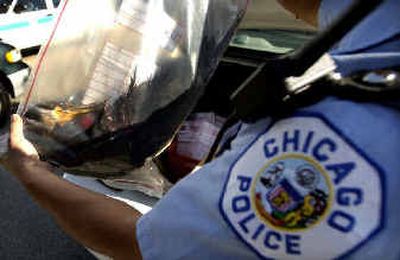Airports seek ways to abate bird ‘strikes’

BALTIMORE – As global demand for flights has grown, so has the number of planes in the air – and so have the collisions with birds that can’t always maneuver around the fast and quiet modern jets.
But after about a decade of effort, aviation and wildlife experts believe they are pecking away at the costly and sometimes tragic problem that has caused hundreds of millions of dollars in damages annually and almost 200 deaths since 1990.
Innovations beyond shooting migrating Canada geese and other feathered, and some furry, wildlife are being shared here this week at an international conference on bird “strikes.”
“We’re making airports as unattractive and uncomfortable for wildlife as possible,” said Richard Dolbeer, national coordinator for the U.S. Department of Agriculture’s wildlife program in Sandusky, Ohio, and chairman of the conference sponsor, Bird Strike Committee USA, a group of government and aviation officials.
Dolbeer said officials appear to have stemmed the upward trend in strikes in 2004 after years of effort. In 1990, 2,175 strikes were reported nationwide to the Federal Aviation Administration, and by 2003, the number had steadily grown to 6,819. But the number appears to be significantly down this year for the first time with 2,237 strikes reported so far. (Up to 80 percent of strikes are not reported, officials said.)
Dolbeer said there is no “silver bullet” for the fowl problem. Compounding efforts are federal and state environmental laws to protect wetlands that draw birds near runways. Further, migratory birds such as geese and herons that are particularly large and threatening to airplanes also are protected by federal law.
Consider these incidents:
•An American Airlines plane made an emergency landing Thursday at Chicago’s O’Hare International Airport because of a malfunction that appeared to be caused by birds being sucked into an engine, airline spokeswoman Mary Frances Fagan told the Associated Press. The plane carrying 107 people landed safely and there were no injuries.
•A Boeing 737 was climbing after takeoff from Lambert-St. Louis International Airport in December when it struck three snow geese. The aircraft sustained $502,000 in damages to its nose, wing and tail and was out of service for more than a week. There were no injuries.
•A plane approaching New Jersey’s Newark International Airport in November was struck by snow geese, causing an engine to shut down and the pilot to lose control temporarily. The plane landed safely with no injuries.
In addition to quieter airplanes and growing bird populations, the larger number of commercial and military flights may be the biggest culprit in the increase in strikes through 2003: The number of flights rose from 17.8 million in 1980 to 28.1 million in 2003, according to the FAA.
Few airplanes are destroyed by birds but about 15 percent are damaged, even if passengers don’t notice, USDA’s Dolbeer said. Sometimes the birds leave a streak of blood or feathers, which are sent to national laboratories to determine their kind. The data may help in getting the strikes’ downward trend to continue, Dolbeer said.
“We’ve already come a long, long way,” he said.